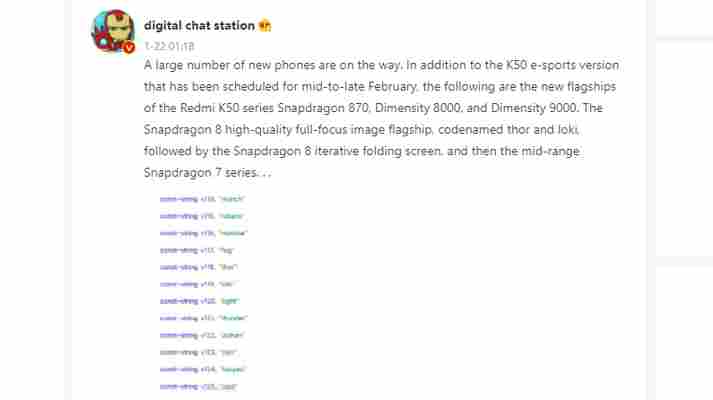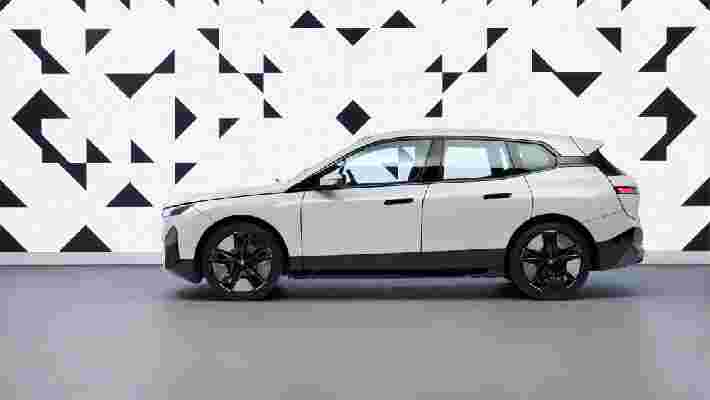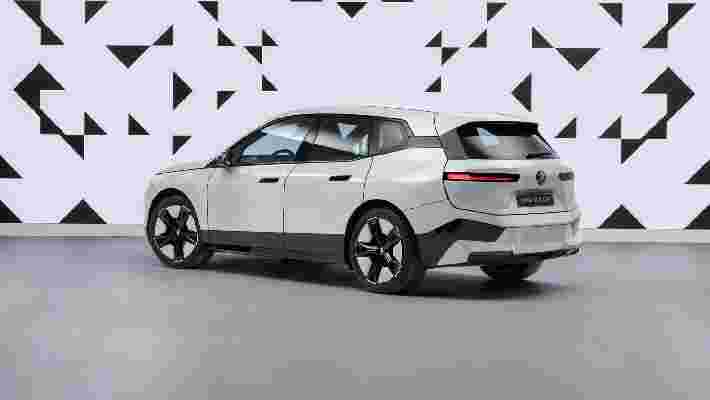One of Sony's most popular - and critically acclaimed - games has come to PC. While Microsoft has been releasing most Xbox games simultaneously on PC, we've had to wait a while for PlayStation exclusives from Sony to land on our rigs, with God of War launching on the PS4 back in 2018.
From our time with God of War on PC, the wait has been well worth it, with the game offering improved graphics, support for ultrawide monitors , and modern tech such as Nvidia Reflex, DLSS and AMD FidelityFX Super Resolution.
When the game launched on the PS4 it was a graphical showcase for the console, and combined with a more mature and emotional story, a new setting (moving from ancient Greek myths to Norse mythology) and the violent and visceral gameplay the series is noted for, it was one of the highlights from the last generation of consoles.
So the fact that it's come to PC, with plenty of enhancements, is incredibly exciting. It also made us keen to see how well God of War looks - and runs - at 8K. After all, Sony has in the past talked about how the PS5 will be capable of 8K games. We have our doubts about that, but playing a Sony game at this resolution on our 8K test rig could give us an idea of what the future holds for Sony games.

8K out of the box
Although God of War is almost four years old and originally released for the PS4, which itself launched way back in 2013, Sony Santa Monica was able to make a graphically ambitious and impressive title that still looks fantastic in 2022.
So, with the PC version, we expected a game that would push our 8K test rig to the limits.
When we first loaded up the game and began playing at the default settings, which meant the 'Original' graphical preset and resolution at 8K (7680 x 4320), we were immediately struck by two things: how damn good this game looks at 8K, and also how well it runs.
Without any tweaking, we had a perfectly playable experience with the opening sections of God of War. Running our benchmarks confirmed that God of War at 8K on 'Original' settings hit an average of 36.3 fps (frames per second), and even hit a maximum of 44.2 fps.
Sure, this is a four year old game that was originally built for last-gen hardware, and we assume the 'Original' graphical settings means it's essentially PS4 visuals, but it remains a stunning title regardless, and the fact that it was running easily above 30fps, which we consider to be the absolute minimum for a game these days, is incredibly impressive.
Of course, there's no surprise that the high-end RTX 3090, which should cost $1,499 (£1,399, around AU$2,030), but is often sold for much more than that, wouldn't have an issue playing a PS4 game, but this is an impressive feat nonetheless, considering the demands 8K places on a GPU, and the graphical fidelity of God of War.
So, the next thing we did, of course, was whack the visual settings higher. On the 'High' preset, we still averaged 32.7fps, and while that is still above the 30fps minimum we demand, that drop is still felt. Still, we then put graphical settings to 'Ultra'.
At this setting, what was already a very good looking game looked even better, with additional details and effects fleshing out the world. Needless to say, at 8K it looked phenomenal. It's quite possibly the best looking game at 8K we've played. Previous games we've tested at 8K had to have their graphical settings turned down to reach a playable frame rate, and this impacts how good they look.
The fact that God of War can run at 8K on Ultra settings at 30fps out of the box is a testament, then, to the developers of the game, as well as the power of the RTX 3090 Ti.

Hunting for higher framerates
When God of War originally on the PS4, it targeted 30fps. While that was an impressive feat for 2018 with such a graphically impressive title and aging hardware, PC gamers in 2022 demand more.
The good news is that God of War on PC has an unlocked frame rate, which means if you have the hardware, you can go beyond 30fps. In an action-packed title like this, it really benefits from a higher frame rate. But, does playing at 8K preclude you from these higher frame rates? Thankfully, not.
As part of God of War PC's range of new features is support for Nvidia Deep Learning Super Sampling (DLSS). This is a feature that uses artificial intelligence to upscale the game from a lower resolution, helping to improve performance with hopefully a minimal impact to the graphics quality.
In the past we've seen DLSS perform magic, allowing games to hit playable frame rates at 8K. With God of War already hitting 30fps, we were keen to see what could be achieved.
The first setting for DLSS is 'Ultra Performance'. This targets better performance over graphics quality, which means the upscaling is doing more heavy lifting, upscaling from a lower resolution to the native 8K resolution.
Interestingly, God of War shows you what the resolution is, and with Ultra Performance, DLSS is taking a 1440p resolution (2,560 x 1,440) and upscaling it to 8K (7,680 x 4,320).
That's a big leap, but DLSS 2.0 does a good job, with God of War still looking great, though not quite as sharp as native 8K.
The performance of the game saw a drastic improvement, hitting 59.9fps on average, and only dropping to 57.9fps during our playtime. It's no surprise that the RTX 3090 has no issue playing this game at essentially 1440p, but DLSS puts in a good showing here. The graphical settings are still set to 'Ultra', and you end up with a game that doesn't just look fantastic on our 8K monitor, but also plays brilliantly as well.

The game, especially combat, feels so much better at 60fps. Matched with impressive visuals, this is perhaps our best 8K gaming experience yet.
Of course, there are other DLSS settings as well. The 'Balanced' setting ups the initial resolution to 4,454 x 2,506 before upscaling it to 8K. The image is a lot sharper, but performance sees a knock to 46.9fps on average. While this is still a lot higher than the 30fps minimum we demand, after playing at 60fps, this drop feels brutal .
Finally, we tried it out with DLSS set to 'Quality'. This is the setting which prioritise image quality over performance, with an initial resolution of 5,120 x 2,880. This means there's less upscaling needed to hit 7,680 x 4,320, and while the image quality does see an improvement, the average frame rate drops to 42.1fps.
AMD alternative
Nvidia's DLSS tech is a welcome addition to any game, and it's clear it does a great job with God of War as well. However, DLSS is only available on Nvidia GPUs, and only the newer RTX models at that.
The good news is that God of War also supports AMD's competing FidelityFX Super Resolution, which also upscales games for better performance. AMD's solution is available on most modern GPUs from both AMD and Nvidia. Usually games support one or the other of these technologies, so it's cool to see God of War support both.
First, we set FidelityFX Super Resolution to 'Performance'. As with DLSS, this setting prioritises performance over looks, but with a higher initial resolution of 3,840 x 2,160. This means there's less upscaling involved, while performance was drastically improved, hitting 59.5fps on average, though it did dip lower than DLSS to 53.9fps.
On 'Balanced', FidelityFX took a 4,512 x 2,542 initial resolution and upscaled it to 8K. This gave us an impressive 55.51fps average score.
Finally, we tested it out at 'Ultra Quality'. This time the initial resolution was 5,908 x 3,324 upscaled to 8K. When playing at this setting, the RTX 3090 managed 39.9fps on average.
A great 8K experience whatever you choose
During our time playing God of War at 8K we had a blast. Not only is this a great looking title, but it's a genuinely great game as well. We have already played it through on PS4, but are now eager to play it all again on PC.
Best of all, if you want to play it at 8K and have a rig capable of it, then you don't have to make any compromises. It runs over 30fps at 'Ultra' settings. While textures are still aimed at 4K screens at a maximum, this really is an impressive looking game on an 8K monitor, with a pixel density which gives the game almost a 3D appearance in some scenes.
Even better, if you want 8K and faster frame rates, both DLSS and AMD FidelityFX Super Resolution allow this. We'd actually recommend going with FidelityFX Super Resolution at 'Performance' mode, which has a slight graphical edge over the similar DLSS setting.
Both look stunning, however, and it's the best way to realise Sony's 8K promises. There's no need for a PS5 for that, but you do need an RTX 3090. Sadly, they are just as hard to find in stock, and are much more expensive.
Twelve new Xiaomi phones could be coming soon
Xiaomi tends to release a lot of handsets, and this year looks set to be no exception, as a leaker has found evidence of no fewer than twelve possibly on the way.
Digital Chat Station (a leaker with a solid track record) has found reference to twelve upcoming handsets in Xiaomi code. All of these phones are referred to by codenames, but between what Digital Chat Station says and previous leaks, we have a good idea of what they are.
Going by a machine-translated version of the post, the codenames ‘munch’, ‘rubens’, ‘matisse’, and ‘fog’ likely refer to the Redmi K50 range, including the K50, K50 Pro, K50 Pro Plus, and K50 Gaming Edition.
These phones will reportedly land in mid-to-late February, and will use some combination of the Snapdragon 870, Dimensity 8000, and Dimensity 9000 chipsets, all of which are reasonably high-end.

Next up, the phones codenamed ‘thor’ and ‘loki’ are said to be camera-focused flagships equipped with a Snapdragon 8 Gen 1 – which is currently the top Snapdragon chipset. These aren’t named but could perhaps be members of the Xiaomi 12 range. We are still waiting for the Xiaomi 12 Ultra , which leaks suggest will have an enormous camera bump .
Then there’s ‘light’ and ‘thunder’, which are thought to be foldable phones, presumably the Xiaomi Mi Mix Flip and the Xiaomi Mix Fold 2.
Last but not least there’s ‘zizhan’, ‘zijin’, ‘taoyao’ and ‘opal’, which will apparently use Snapdragon 7 series chipsets. That lines up with the Xiaomi 12 Lite, and indeed some of these codenames have previously been linked with that phone.
But it’s also possible that one or more of them belong to the Redmi Note 12 series, as that’s also rumored to use Snapdragon 7 series chipsets.

Analysis: lots of phones, lots of time
While some of these handsets could land as soon as February, Digital Chat Station doesn’t provide release estimates for most of them, and indeed we could be waiting a while for some.
The Xiaomi 12 Lite and Xiaomi 12 Ultra will probably launch fairly soon – assuming they’re really coming at all – but some other phones on this list, such as the foldables, might be further out.
Then there’s the fact that even when they’re unveiled in China, some of these handsets might not get a global launch until later, if at all. The Xiaomi 12 for example is already available in China, but not yet anywhere else.
So, while there’s a good chance this list and the source’s interpretation of it are accurate, that doesn’t necessarily mean you’ll be able to buy all of these phones in the near future.
Via Phone Arena
BMW has made a color-changing car… yes, really
It's the sort of thing you'd expect to see in a James Bond film, but BMW has made a color-changing car that actually works in real life.
Debuting at CES 2022 , the customized, fully electric BMW iX has body panels made from E Ink displays - the same technology you find in the screen of a Kindle ereader - in a system it's calling 'iX Flow'.
Once the E Ink panels are on the car, they're coated with a special layer to help protect them against the elements.
In the virtual demonstration we were shown, the modified BMW iX was switched from white, to black, and back to white. It's a convincing showing, although when white, rather than one clean color, the car has a triangular pattern on the bodywork.
This is likely due to the physical makeup of the panels on the car, and something which is less obvious from a distance.

While the demo is currently just changing the vehicle’s color between black and white, BMW says that other colors are possible - opening up the possibility of some real variety for consumers in the future.
And future implementations of this tech won't be limited to color changes of the bodywork.
BMW explained that the tech could be used on specific areas of a car - such as the grille, to give it different appearances, or even on license plates (although there would be numerous legal limitations here).
There's more too - as on an ereader, with this technology you could get your car to display information (in images and text) on its exterior, things such as charge status, which would be a handy feature for EV owners.

So it works, but is it realistic?
E Ink panels are well known in the tech industry and while they're most commonly associated with e-readers, they've also appeared in wearables, smartphones, tablets and more.
A highly versatile and flexible product, E Ink can be cut into different shapes and hole-punched, which makes it ideal when it comes to covering the obscure angles of a car.
The panels house a bunch of transparent capsules with color pigments in them, and when a current is passed through it, certain colors can be called to the surface. This may sound like something that's potentially power intensive, but it's not.
In fact, only a very small amount of energy is required to make the colors switch, and none is required to keep a color fixed in place. This means the system has very low energy consumption, which should allay any fears about the feature draining the EV battery and hampering your car's range.
So, will we actually see something like this on a vehicle available to the general public? BMW certainly isn't ruling it out, noting that early indications for the tech are positive.
BMW believes it's realistic as E Ink is not that complex a material - and not unrealistic in terms of price, either.